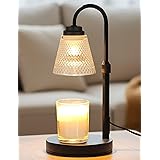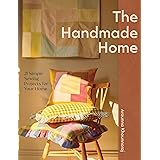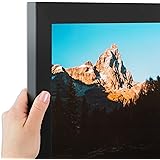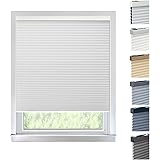Creating a truly welcoming home environment is more than just aesthetics; it is about fostering a feeling of comfort and ease. As explored in the video above, many common decorating mistakes can inadvertently make your living space feel uninviting. This often happens without homeowners realizing it.
Your home should be a sanctuary. It needs to feel good for you and your guests. Small adjustments can make a big difference. These simple changes help craft a space where everyone feels happy and relaxed. Let us explore key areas that might need attention.
Transforming Your Living Space: Common Decorating Mistakes Rectified
1. Poor Furniture Layout
Furniture arrangement greatly impacts a room’s functionality. Spaces often feel uninviting when furniture does not encourage interaction. Sofas and chairs should be positioned to face each other. This creates natural conversation areas. A primary focal point, like a fireplace or TV, can be an anchor.
However, all seating should not solely face this one point. Adding accent chairs or ottomans is very helpful. These pieces allow people to sit across from one another. Conversation flows much more easily this way. Swivel chairs are especially useful in open-concept homes. They offer flexibility, allowing views of different zones. This makes a space feel more open and adaptable.
Consider the flow of conversation. An intimate setting is always appreciated. These simple adjustments can make a significant impact.
2. Neglecting Bathroom Hospitality
A powder bathroom’s cleanliness speaks volumes. Dirty or well-used towels instantly make a space feel uninviting. Decorative paper napkins are an excellent solution. They are disposable and assure guests of freshness. These can also add a touch of elegance.
Furthermore, attention can be given to small details. Wrapping extra toilet paper rolls enhances this feeling. It makes the bathroom appear meticulously cared for. This simple act conveys thoughtfulness. Guests will notice this subtle hospitality.
3. A Cluttered Entryway
The entryway sets the home’s tone immediately. A cluttered entrance creates a poor first impression. Shoes, bags, and mail quickly accumulate. This visual chaos makes a space feel unwelcoming. Organization is key in these areas.
Closed storage options are highly recommended. A coat closet is ideal for outerwear. Additional wardrobes or benches with storage can be added. Baskets with lids also provide excellent hiding spots. These solutions keep clutter out of sight. An organized entryway communicates order and calm. This positive feeling extends throughout the entire home.
Another important element is the rug. A larger rug can make an entryway feel more expansive. Guests can step comfortably into the space. Small mats can feel cramped. A generous rug helps define the entry zone. It truly adds to the feeling of welcome.
4. An Overly Pristine Look
While cleanliness is important, a home can sometimes be “too” clean. An overly perfect space can feel unapproachable. Guests might hesitate to sit or touch anything. This can create an uncomfortable atmosphere. A “relaxed clean” look is often preferred.
This means the space is clean but lived-in. Board games can be left on a coffee table. Throw blankets can be artfully rumpled on a sofa. Even a pair of shoes by the door can signal comfort. These small touches encourage guests to relax. They show that the home is meant to be used and enjoyed. Observing how guests interact with a space can reveal this issue. If guests hover, the home might be too formal.
5. Lack of Functional Decor: Coasters
Coasters are a small but mighty decor item. Their absence can make guests feel awkward. They might worry about damaging surfaces. Providing coasters gives an unspoken invitation. It says, “Please, put your drink down comfortably.” This simple gesture enhances guest comfort.
Coasters should be placed in various rooms. Living rooms, family rooms, and even offices can benefit. They can be chosen to match the home’s interior. This makes them blend seamlessly with the decor. They are a functional piece that speaks volumes. It’s an easy way to create an inviting home.
6. Ignoring the Power of Scent
Scent has a powerful impact on mood and memory. An unpleasant smell instantly makes a home feel uninviting. A pleasant aroma, conversely, creates warmth. Scent helps create an immediate sense of welcome. It can transform a space.
Candles are a popular choice for this. A large candle can be lit in the entryway. Room sprays offer a quick refresh. Rug powders can also eliminate odors. Amber scents are often recommended for their warmth. They are neutral and sophisticated. Other inviting scents include vanilla, soft linen, or cedarwood. These sensory elements contribute significantly to comfort. A fresh, clean scent is always appreciated.
7. Relying Solely on Overhead Lighting
Overhead lighting can be harsh. It often creates a stark and uninviting atmosphere. This is especially true in the evening. Layered lighting is crucial for warmth and ambiance. Lamps are essential for this purpose. They cast a softer, more inviting glow.
Three lamps per room are often recommended. This balances the light effectively. Lamps provide ambient lighting. They help create a cozy and welcoming feeling. The video’s example of a thrifted lamp highlights affordability. Designer looks can be achieved on a budget. Turning on lamps as the sun sets establishes a warm evening atmosphere. This is beneficial for both guests and residents.
8. A Home Without Personal Touches
Homes without personal items can feel generic. They might lack warmth and personality. Incorporating personal pieces adds life to a space. These items tell a story. They make a home feel unique and cherished. Such touches make a home more inviting.
Wedding photo books are one example. They can be displayed tastefully on coffee tables. Family photos can be integrated into gallery walls. Small framed artwork can adorn shelves. Travel souvenirs and cherished heirlooms also add character. These elements allow a home to reflect its inhabitants. They truly bring a space to life. Displaying personal items tastefully is key.
9. Lack of Hidden Storage for Clutter
Even small items can create visual clutter. Vitamins, medication, and mail quickly accumulate. Seeing these personal items can make a space feel disorganized. Decorative boxes are a stylish solution. They offer hidden storage for these small necessities. These boxes are perfect for tidying high-traffic areas.
Entryways, kitchens, and living rooms can benefit greatly. Boxes come in various patterns and colors. They can enhance the overall design of a room. No one needs to know what is inside. This keeps surfaces clear and clean. Utilizing decorative boxes contributes to an organized and inviting home.











